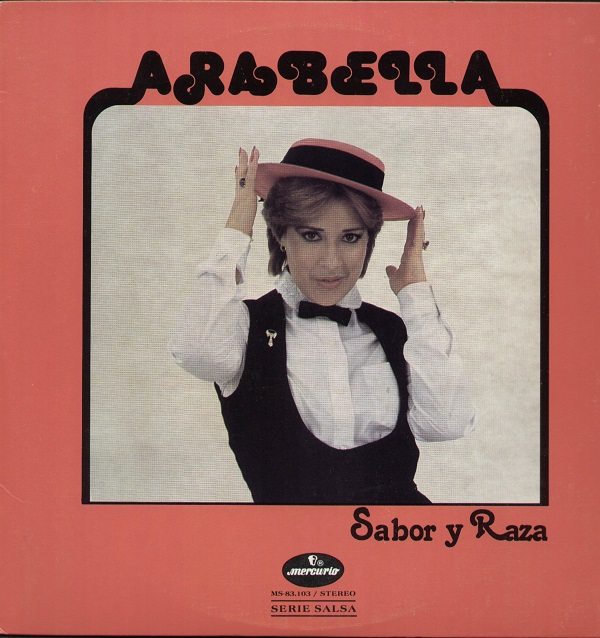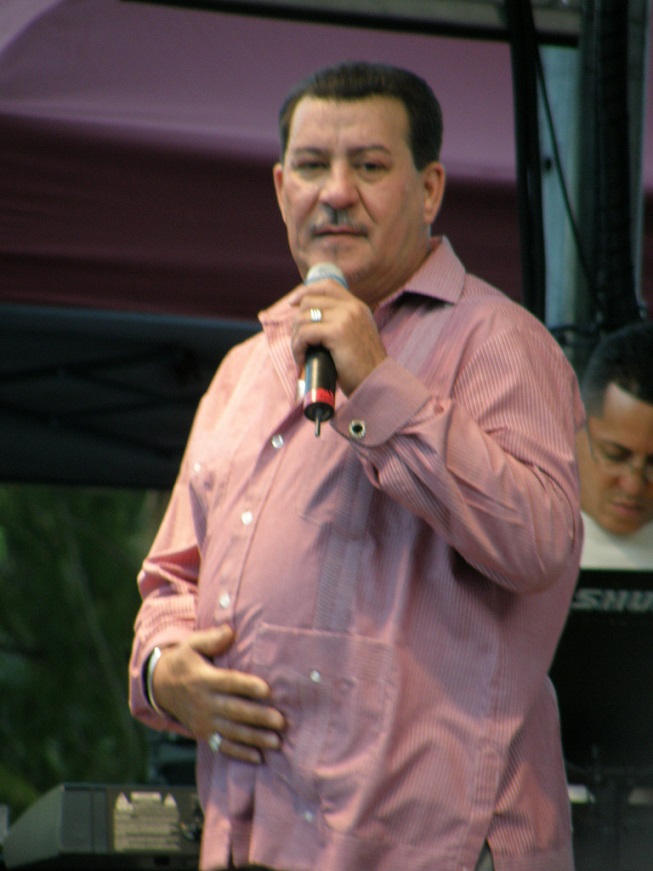Born on June 5th, Arabella, “La Sonera Mayor”, is from Bogota, Colombia.
Arabella With her first name “María Margarita Pinillos”, she is an excellent Salsa singer and composer who shined in the 70’s and 80’s with her record productions, whose consecration and fame, however, was not in her native country but in Venezuela.
His Caribbean music song that made him famous was “Callejón” and he stayed in Venezuela for a while.
In 1972 he settled in Venezuela, it was in this country where he managed to strengthen his career and achieve the great success he had, he recorded several albums in the company of great artists of the time. In 78 and 79 he formed a group called “Los Maraqueros”, with which he could freely make the music he really wanted to make, Cuban music of Trio Matamoros and Puerto Rico.
She felt great interest in music from a very early age, however she did not contemplate from that time to make professional music, it was until she was 13 years old that a friend enrolled her without prior consultation in a radio contest of the time called “Orquídea de Plata Phillips”.
But because she was not prepared she was disqualified, however as a result she was recommended to participate in the television contest “Michel Talento” the first contest for amateurs of Colombian television. From that contest she went on to be hired at the Tequendama Hotel, the most important hotel of the time, as the first woman to sing vallenatos at the Salón Monserrate with the company of accordionist Ángel Martínez.

Arabella’s name was born from the fact that they used to tell her that she resembled a model that visited Colombia who unfortunately committed suicide, her pianist suggested her to adopt that name as her artistic name and she accepted.
Considered for many years as the natural successor of Celia Cruz, and Celia said that Arabella was her successor due to her extraordinary vocal quality.
She settled in Caracas-Venezuela since 1982, obtaining success in Salsa thanks to the advice of the great announcer Phidias Danilo Escalona.
In her beginnings she formed her own group called “Los Maraqueros”, she also recorded with Pacho Galán and with “Los Hijos del Rey” of the Dominican Wilfrido Vargas in which she recorded 4 merengues in a trip she made to the Dominican Republic, Wilfrido himself located her to record with him and they were hits the theme Corazón, Corazón de Julio Iglesia.
Los Armónicos de Manolo Monterrey, Chucho Sanoja y su orquesta, Willy Pérez and with the Megatones de Lucho.
With the groups that accompanied him as a salsa soloist.
It is worth mentioning that the song “Mi Vida es Cantar” immortalized by Ursula Hilaria de la Caridad Cruz, “La Guarachera del Mundo”, the queen of salsa, was composed by Arabella, who gave it to the eternal Cuban and salsa luminary.
For a while she lived in Puerto Rico where she decided to become a musical show businesswoman, with this company she traveled to several Latin American countries with first class singers: Marvin Santiago, Oscar de Leon, Ismael Miranda, among others.

She finally announced her retirement from music after recording “La Musiquita” and “Yo te Vi”. After her retirement she moved to Miami, United States with her daughter, Margarita decided to dedicate herself to take care of her beloved daughter, her home and two cats and two dogs that are her favorites.
DISCOGRAPHY
– Más Allá Del Sabor (1990)
– Mi Son Es Un Misterio (1987)
– Puro Trópico (1987)
– La Musiquita (1987)
– Arabella (1985)
– Sabor Y Raza (1982)
– La Simpatiquisima (1980)
– Encontré Mi Amor (1979)
– Arabella (1978)
– Nelson Martinez y Arabella (1976)
– Nelson Martinez / Arabella Y Su Combo Tropical (1974)

SINGLES & EPs
– I Was Your Hunt (1990)
– Amiga La Vida / Sin Dejarte De Amar (1987)
– Mi Son Es Un Misterio / Mentiras (1986)
– Zape Pa’ Lla / Mentira (1986)
– Mentiras / Panamá (1985)
– Chico Matanza / Nu Sueño Mas (1982)
– Pal Campo/Mucho, Poquito, Nada (1978)
– Hija De Nadie (Flor Del Mal) / Arepas
– Domingo En El Barrio / Chico Matanza
– Mentiras / Espejismo
– Tómame Que Tómame / Con La Vara Que Midas (Take Me That Take Me / With The Rod That Midas)
Source:
William Aramburen Salsa Ephemeris
Also Read: Betsy Colombian Salsa, Bolero and Son Cubano Singer















































